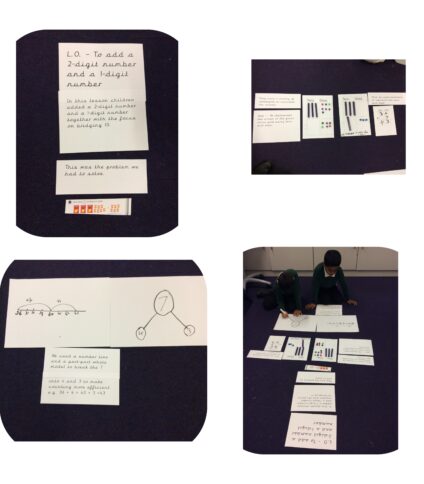At Uplands Infant School, our maths curriculum has been designed so that our children can be empowered to be successful, confident mathematicians with a sense of enjoyment and fascination for the subject and how it underpins our daily lives. Our children are equipped with a deeper conceptual mathematical knowledge which can be applied fluently to solve increasingly complex challenges. Our curriculum enables children to think mathematically and articulate their knowledge and reasoning using precise vocabulary.
Through cognitive research, we have designed our maths curriculum to aid long term retention.
Our Key Mathematical concepts are Number and Place Value, Addition and Subtraction, Multiplication and Division, Measurement, Geometry and Fractions. These are revisited so that our children are able to return to the same concepts over and over so that they gradually embed and deepen their mathematical knowledge in a range of meaningful contexts
Staff hold a core belief that all our children can achieve mathematical success which permeates and nurtures a positive mathematical mind set and attitude in our children. We teach for mastery which means all our children progress through content together, supported by responsive same day interventions. Lessons are sequenced to secure understanding of the small, progressive steps so that a solid foundation of deep mathematical concepts, structures and procedures can be embedded. Our curriculum sets out a clear breadth of study for each year group and the criteria for progression within each mathematical concept. This enables our children to reinforce and build upon prior learning, make connections and develop subject specific language.
Our teaching of maths combines discrete, whole class maths lessons with opportunities for children to apply their mathematical thinking to real life contexts in our continuous provision and throughout our school day so that connections can be reinforced. Our key mathematical concepts are revisited within the year group and built upon across the key stages to ensure progression and to enable children to build upon their maths schema and therefore move learning from working into long term memory.
We use Power Maths and the NCETM guidance and support materials as tools to support teaching for mastery.
The impact of our curriculum is that by the end of each term, the vast majority of children have sustained mastery of the content, that is, they remember it all and are fluent in it; some children have a greater depth of understanding. We track carefully to ensure our children reach the expectations of our curriculum through ongoing formative assessment, termly summative assessments and our Symphony Assessment System for maths. Our assessment principles enable teachers to make informed judgements about the depth of their learning and the progress they have made over time.
Nursery - In Class Learning - 2022-2023
For our Nursery children we have been using the milk routine to deliver mathematical learning. The children have been learning about one – one correspondence and the importance of sequence and order.
Children have asked questions such as ‘ do we have enough milk?’, who is next? Where do I give after?’ supporting conversations about quantity, comparison and ordering.
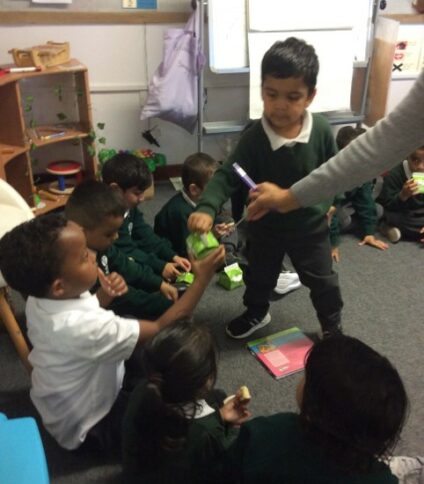

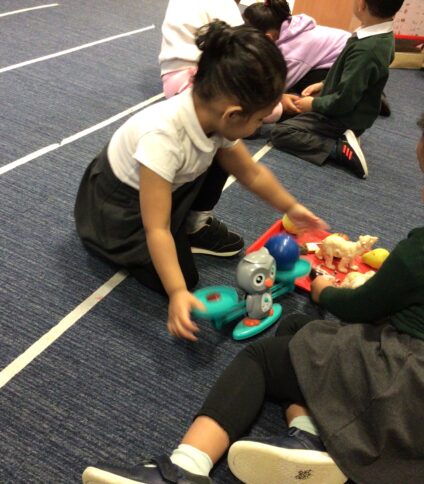

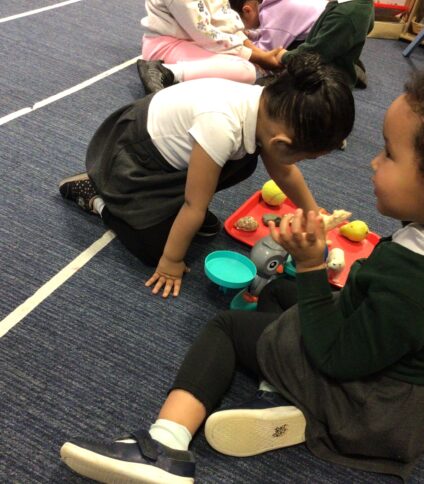

Reception - In Class Learning - 2022-23
Counting, cardinality and numeral recognition in action! We have been learning how to count accurately to 5 with careful 1-1 correspondence, retaining the value and then matching the quantity to the correct numeral.
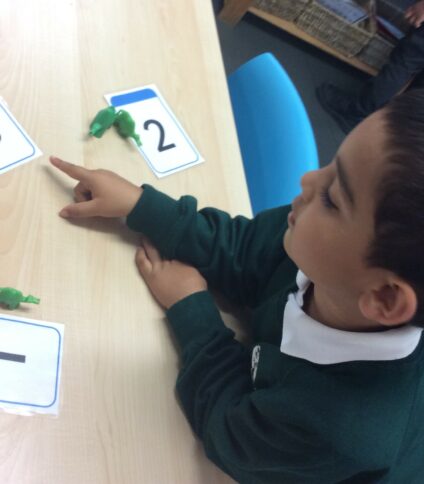

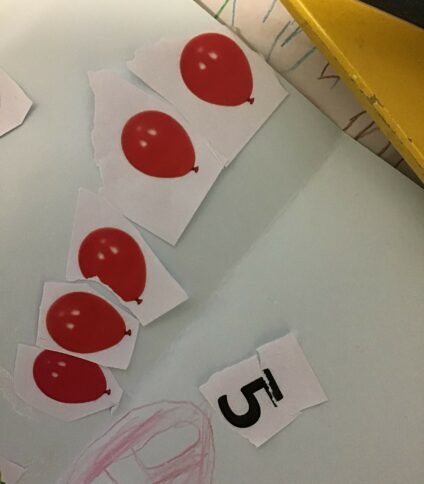

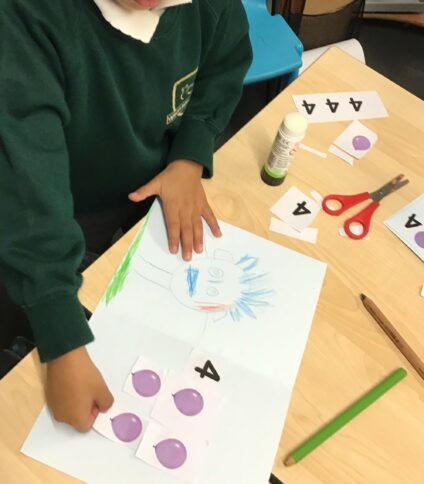

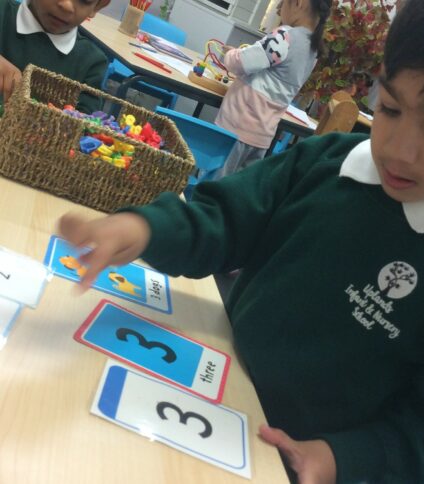

Children practised their counting skills. Some chose to line the leaves up, saying 1 number, number name per leaf whilst others were able to subitise.
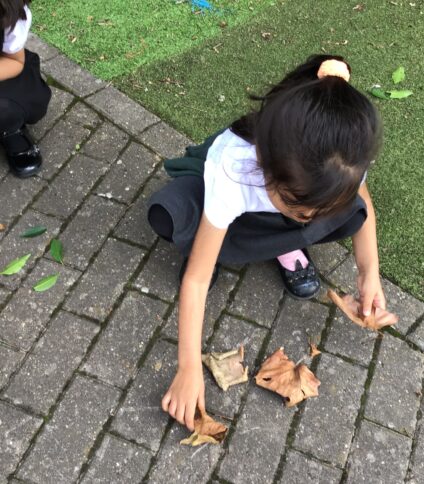

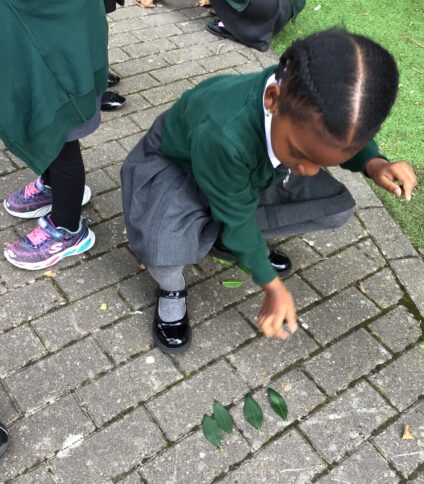

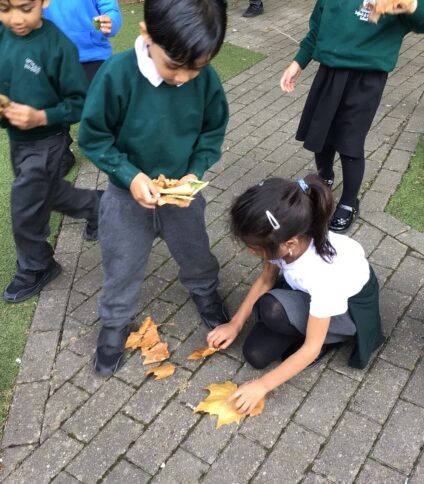

Reception children have been looking closely at the characteristics of 3D shapes. They have been investigating which shapes roll and which shapes slide. They have learnt the shapes that roll need to be curved and those that slide must have a flat side.
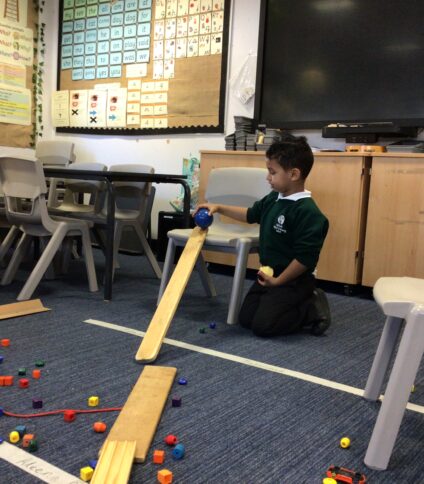

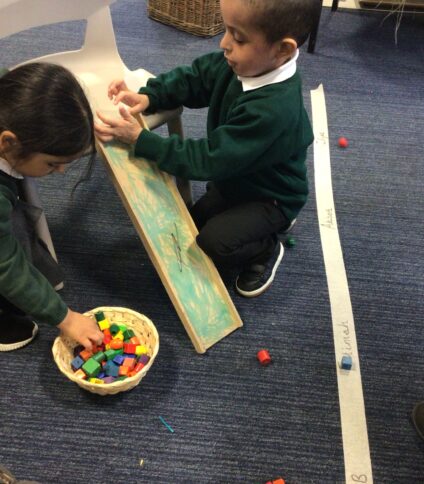

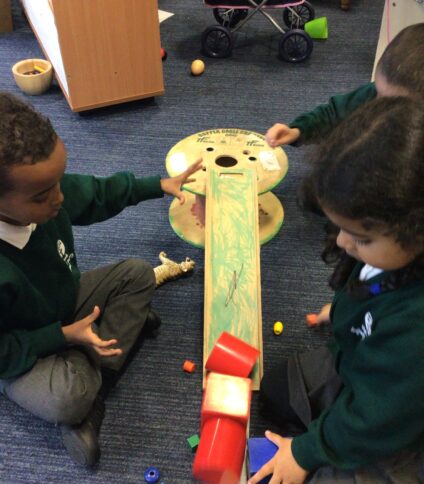

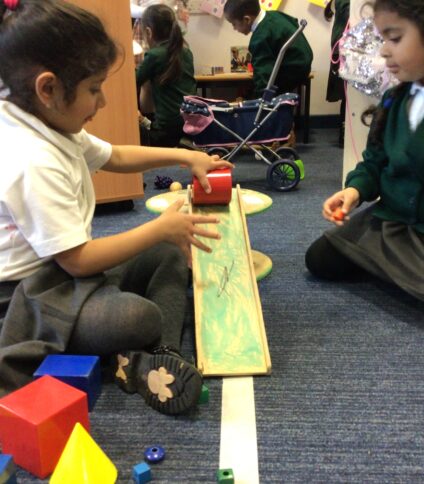

Reception children have been exploring 3D shapes and how they fit together to make strong structures. We have been using everyday language to talk about these shapes (curved, flat, long, round). The children noticed that a shape must have a flat side to balance and build with. The children demonstrated great concentration, perseverance, collaboration, and problem-solving skills as they worked together to build their structures.
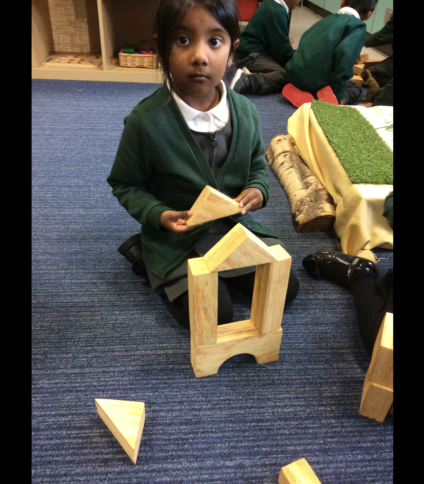

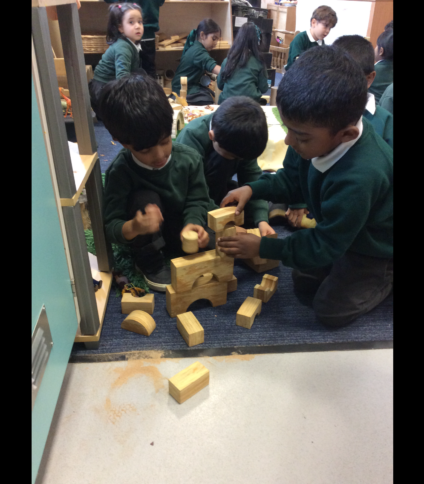

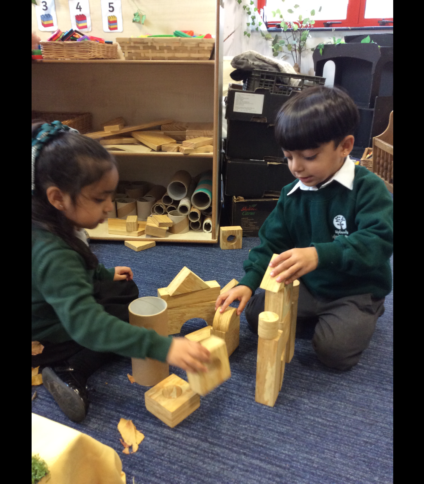

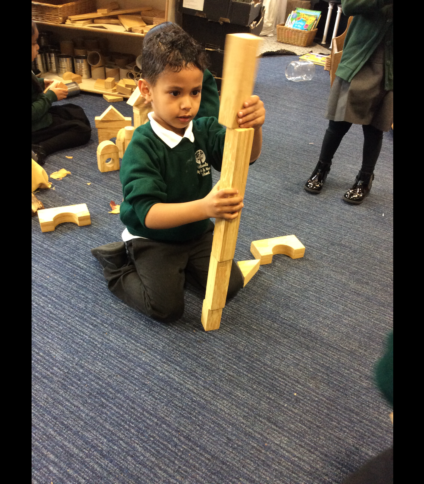

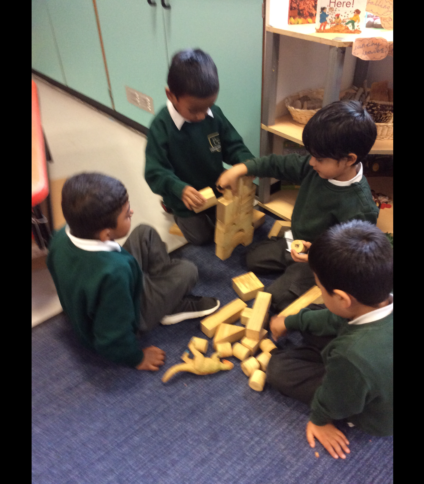

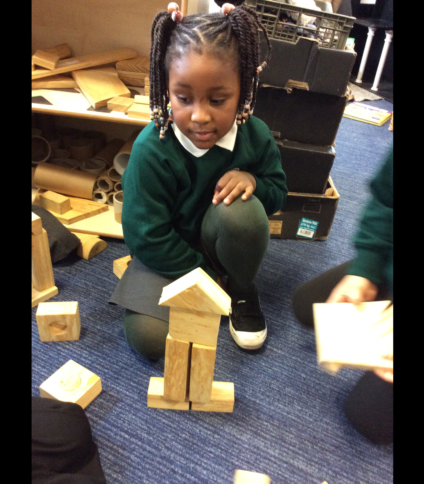

The children in Reception were enjoying exploring the properties of 3D shapes to build towers. They were thinking about how flat faces helped them to stack shapes. They discovered how curved surfaces were tricky to balance and build upon.
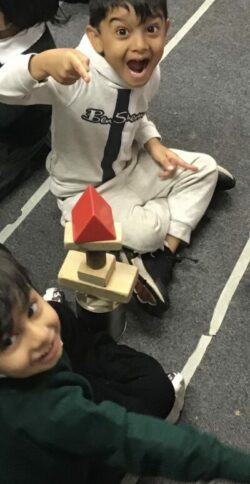

Math’s in action!
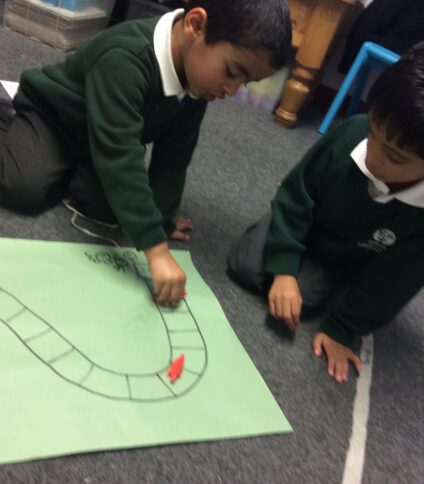

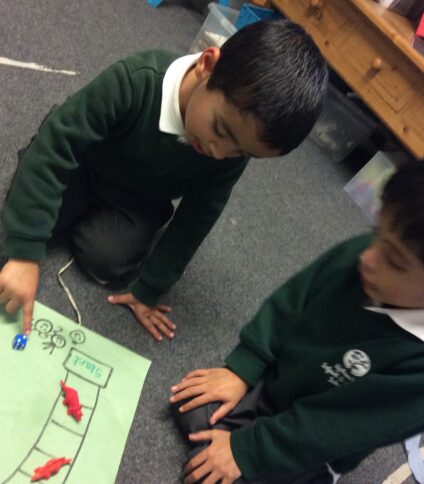

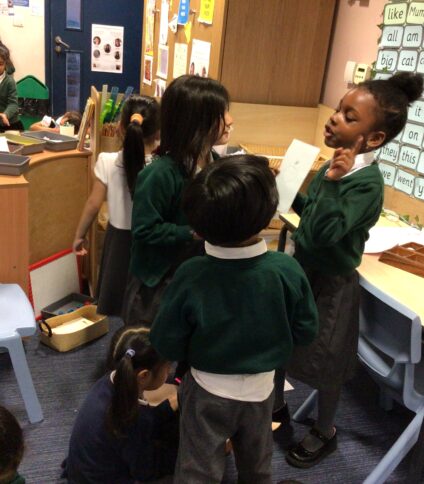

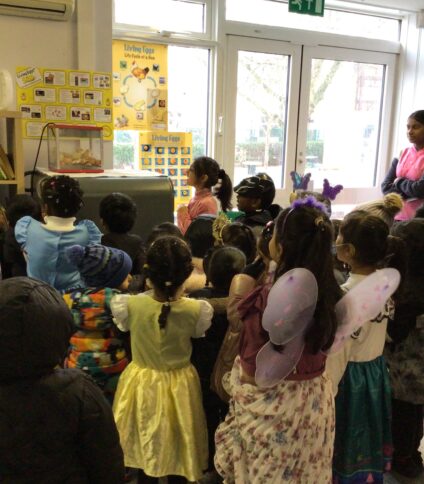

Reception were exploring weight and used the key vocabulary of lighter and heavier. They found the small things can be heavy, and big things can be light. They understood that to measure weight you can use scales, and the scales tip down if the object is heavier.
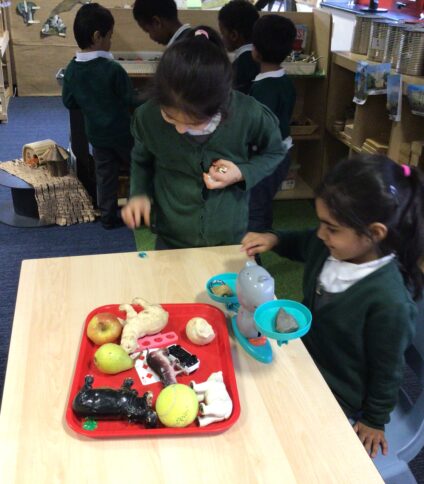

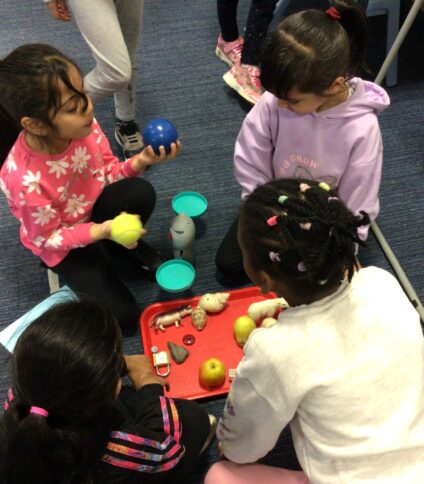

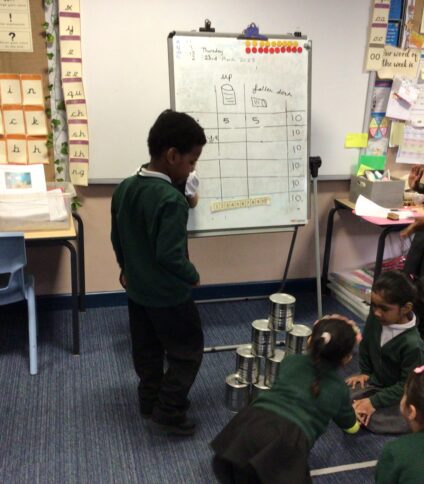

Year 1 - In School Learning - 2022-2023
This week, in maths we are investigating numbers to 20. We used tens frames to help us and we realised that when we are counting numbers that are greater than 10, we can count on from 10 and we do not have to start from 1. We used the sentence stem “There is one 10 and 3 ones” when we made numbers greater than 10
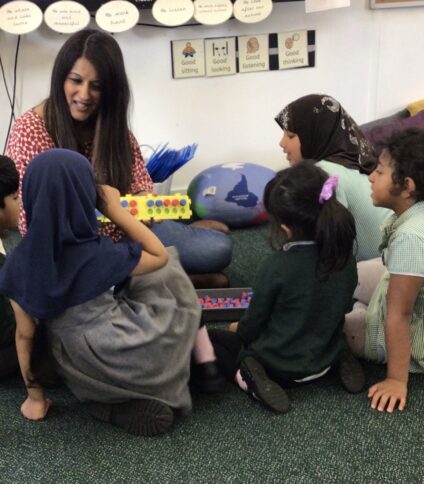

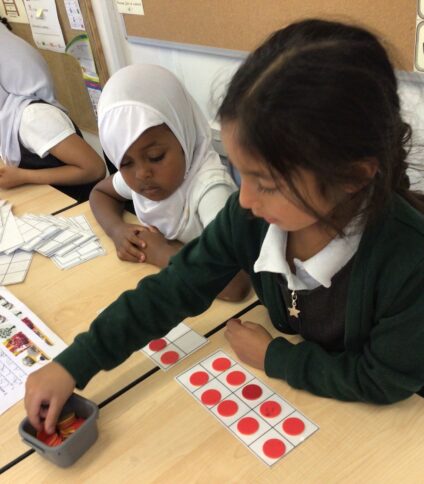

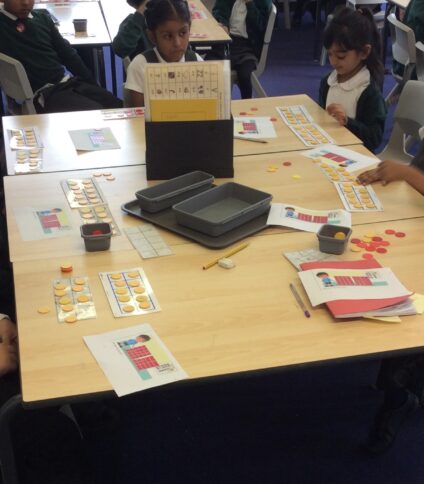

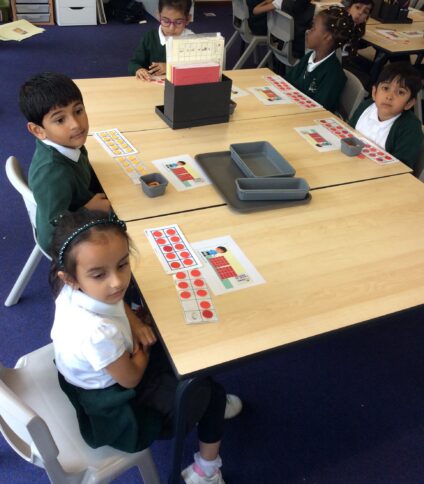

This week in Maths Wallabies class have been learning to find one more and one less than numbers to 10 and then 20. Together and independently we solved word problems using our knowledge of this concept. While we learn to become fluent in our thinking we use the number track and ten frames to investigate and then as we get more adept, we show understanding through quick recall and then use equipment to check our thinking. We are learning to explain what we know using the mathematical language more and fewer than in a sentence to make mathematical comparisons.
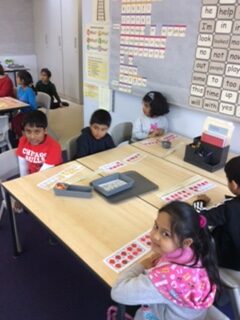

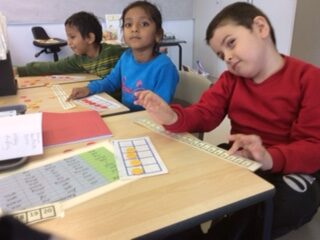

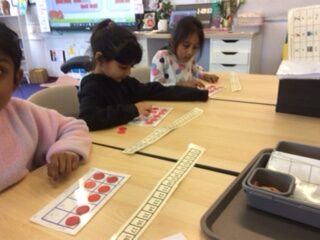

In year 1 this week, in our maths mastery lesson we have been identifying adjacent numbers within 10. The number blocks helped us with this concept. We built a staircase using blocks to help us. We used the sentence stem: 2 is before 3; 4 is after 3. We did this with different numbers.
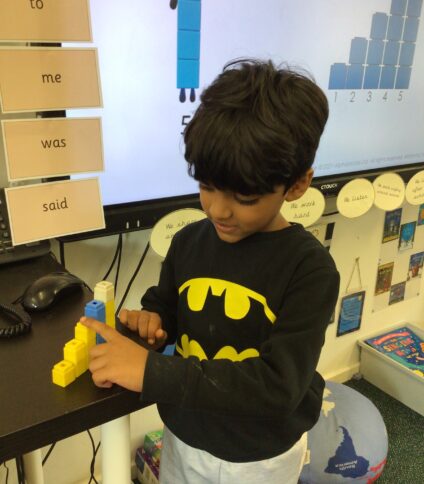

In maths, Year 1 have been learning about the part-whole model. We discovered that the model has a whole which shows us the total quantity and it is made of the parts. The sentence stem that we used was “The whole is made of the parts and the parts add together to make the whole.
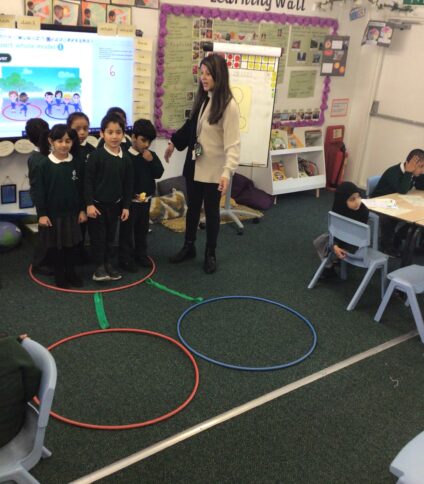

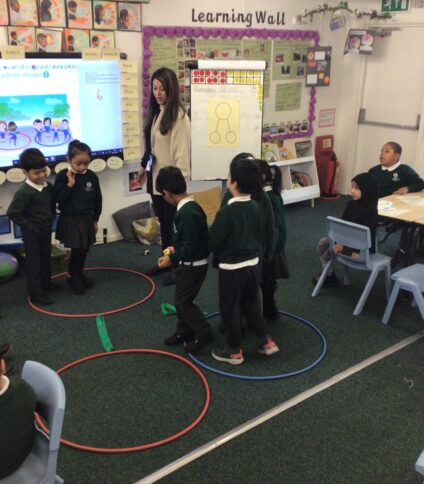

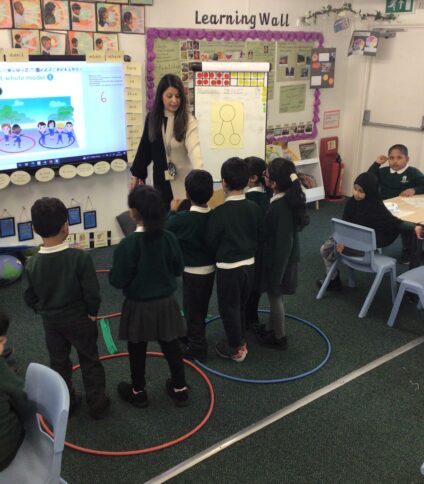

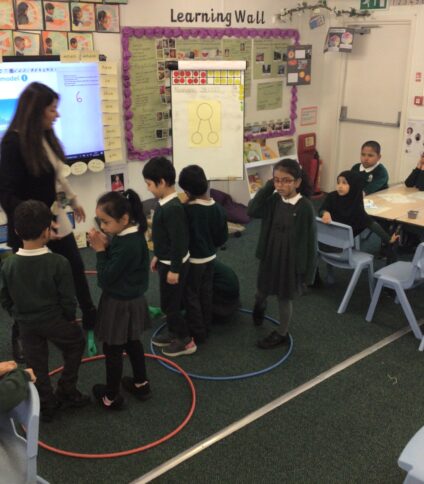

Year 2 - In Class Learning - 2022-23
2021-2022 - In Class Learning
Comparison
Sorting & Clarifying
Through our daily routines the nursery children have been using their mathematical skills to sort and find the exact item when tidying away the toys.
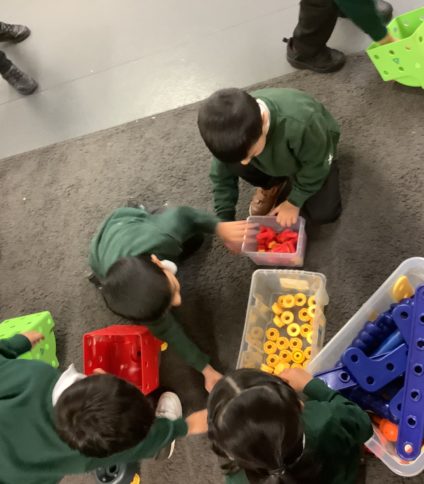

Perceptual
The children in the nursery have been learning to visually compare 2 groups containing similar objects using the language more and fewer. The boys collected the unifix cubes, placed their towers next to each other and then compared who had more cubes.
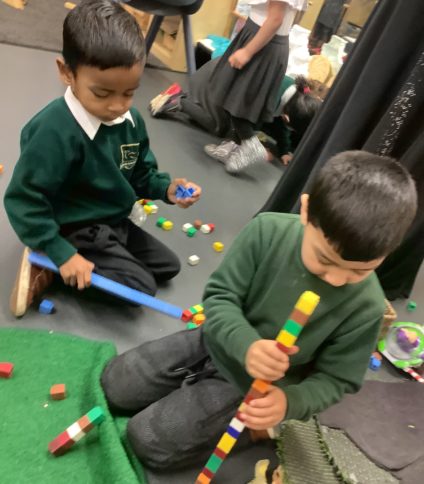

Composition
Part, Part, Whole
The nursery children have been applying their knowledge that a single object can be split into similar sized parts and then recombined to make the whole though using the wooden fruit in the home corner.
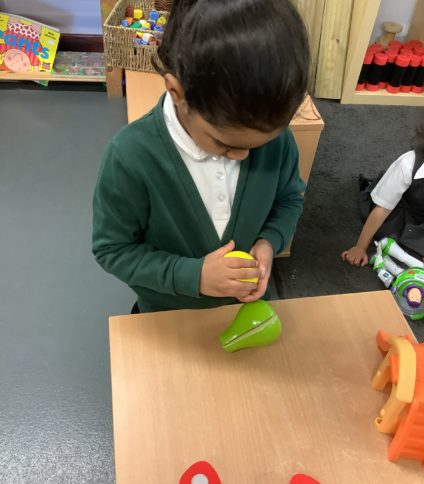

Shape, Space and Measure
In nursery the children have been exploring and making arrangements with shapes to build and make models.
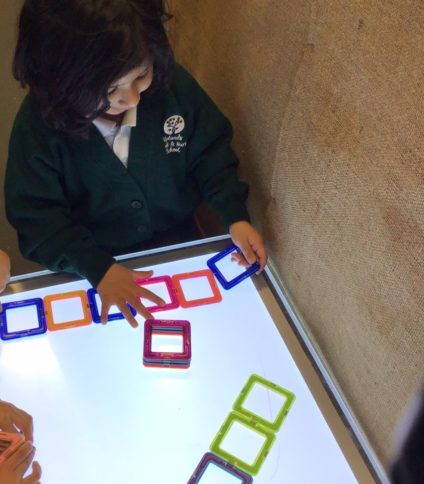

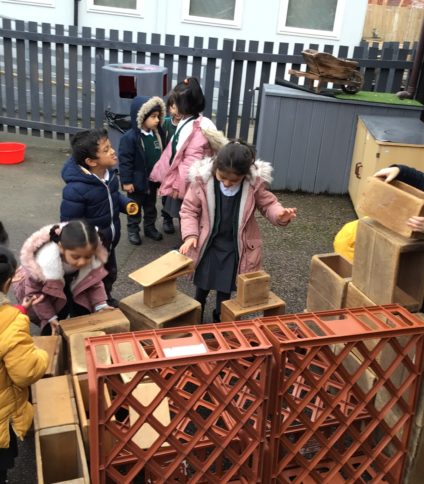

Cardinality and Counting
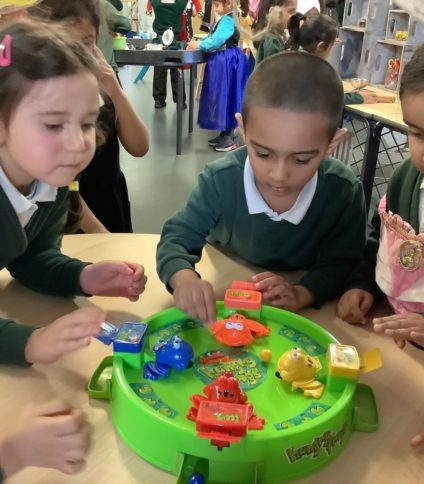

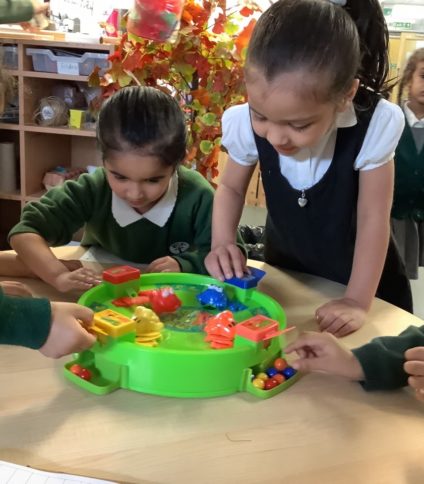

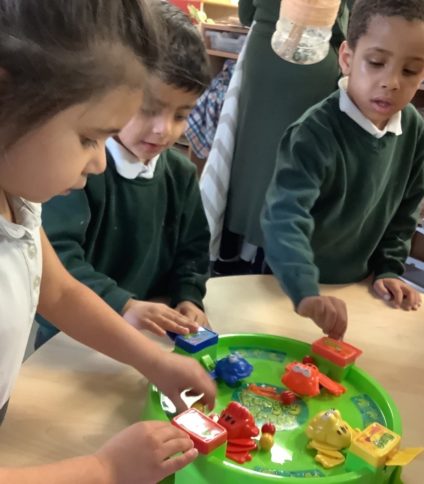

Shapes
The children in Reception were exploring the properties of 3d shapes. The children were challenged to build a tower using a curved shape. They showed great problem solving and collaboration skills.
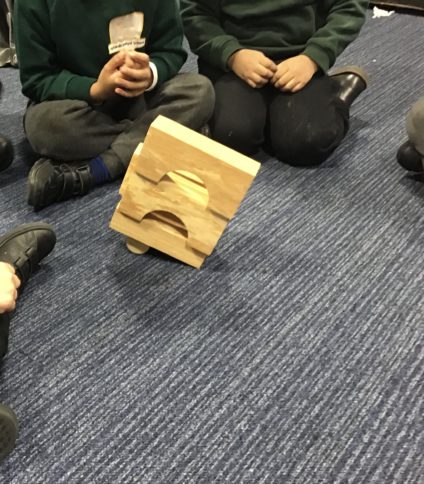

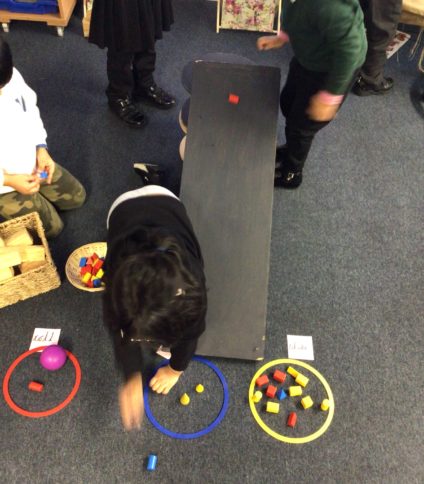

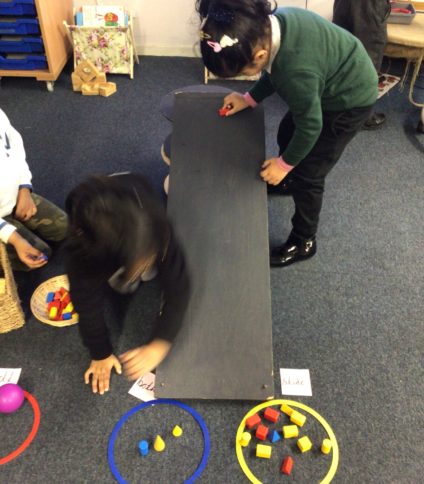

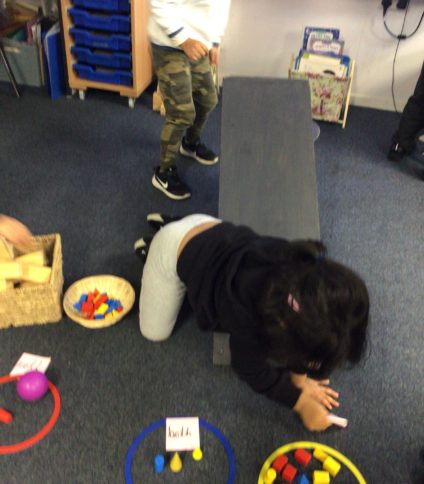

Number Bonds
We were looking at number bonds to five, exploring smaller numbers with numbers and mark making.
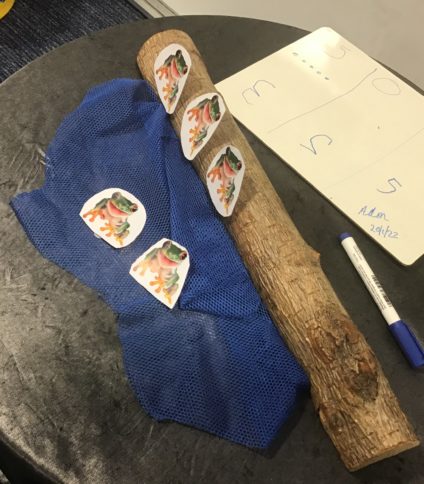

The children decided to adapt the song ‘five little speckled frogs’ to ‘five Godzilla’s sat on a log’. The children explored how many Godzilla’s on the log, how many in the pond and how many altogether.
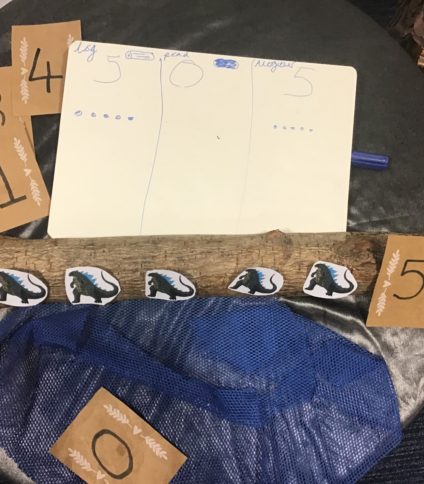

Using cubes to create Number blocks and match numerals.
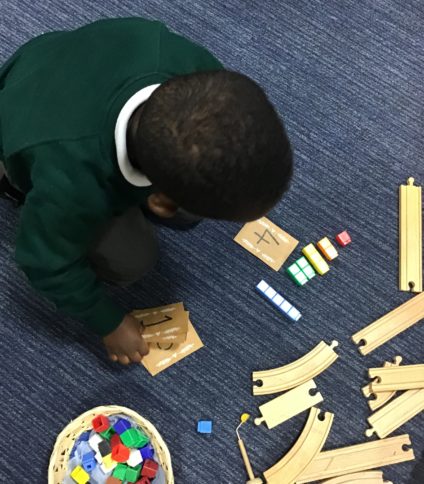

Counting
Children in reception creating and counting collections of 9 objects.
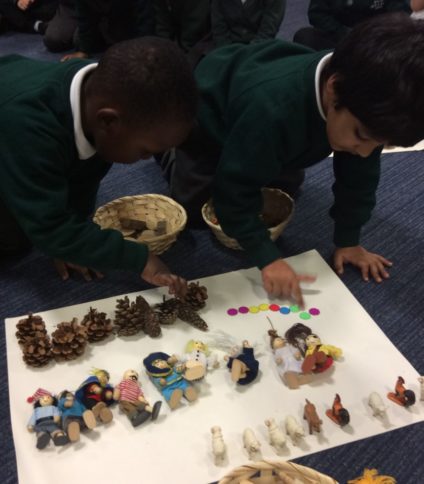

The children in Reception have enjoyed creating their collections in continuous provision. The children independently decided on a fixed quantity, counted out objects from a larger group, matched numerals to quantities and represented numerals in different ways. The children were really excited to create their collections and proud to show off their counting skills.
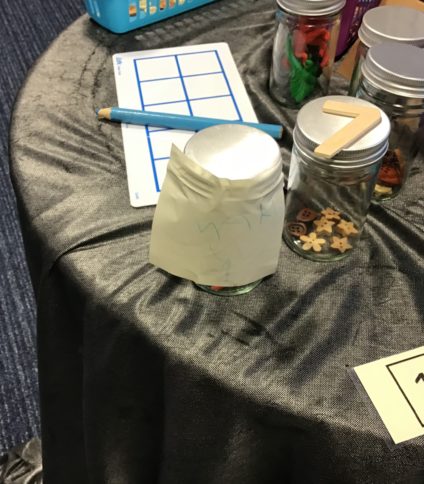

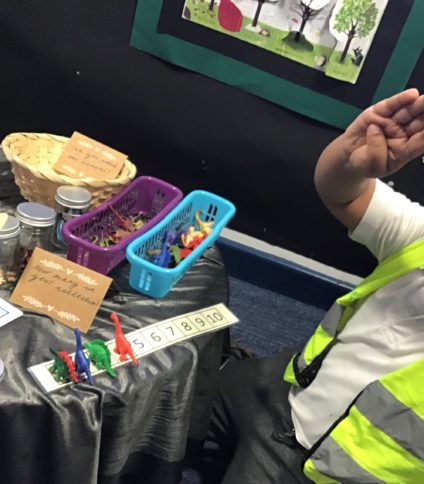

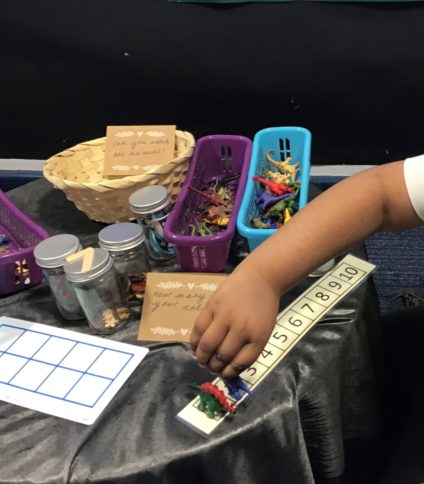

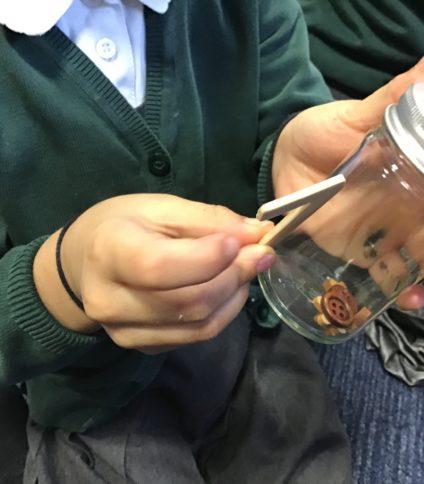

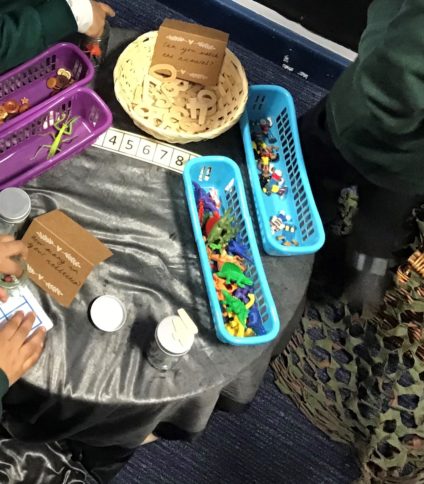

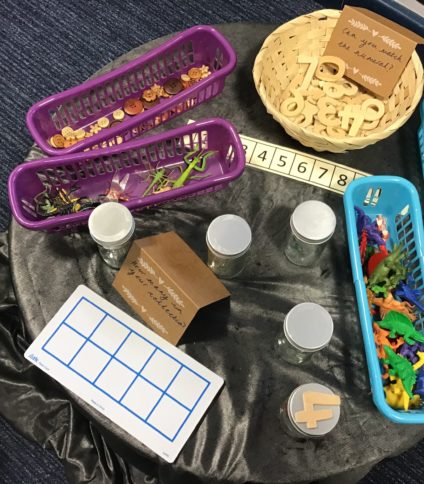

Comparing more, fewer and equal quantities.
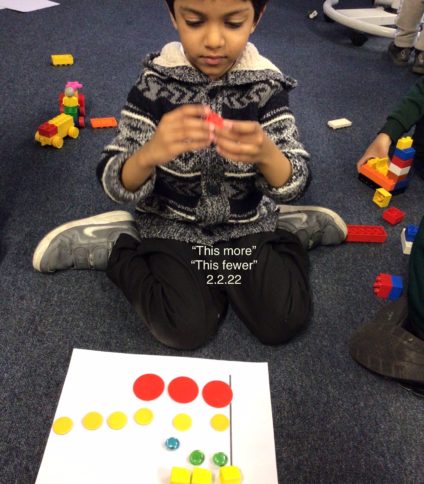

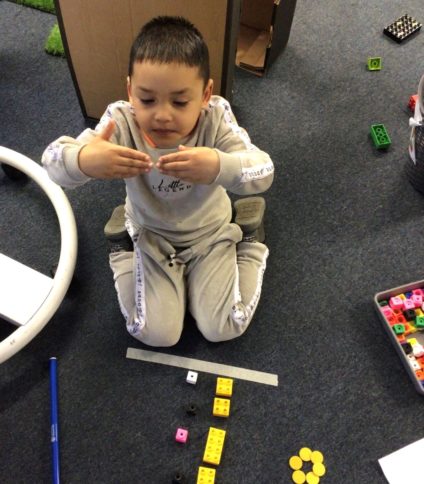

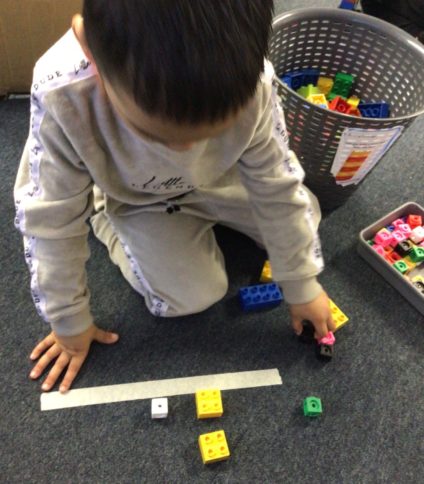

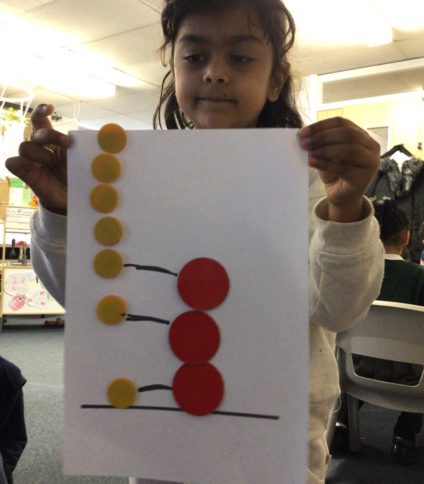

We have had lot of fun playing dominos! Children were taught how to play dominos in the continuous provision. Children learnt dice patterns, subitising, counting, matching and sorting as well as problem solving. Children really had to think how they placed their tiles and how to orienteer them. Children developed their sharing skills, turn taking, listening skills and being patient.
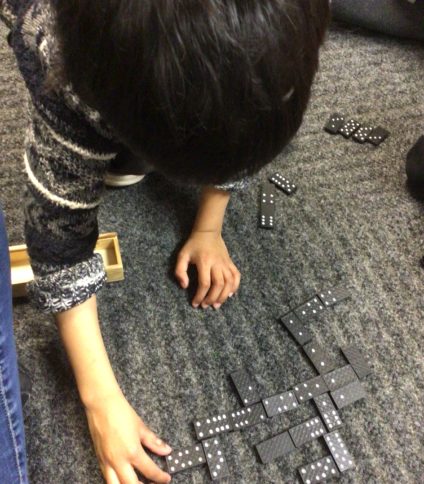

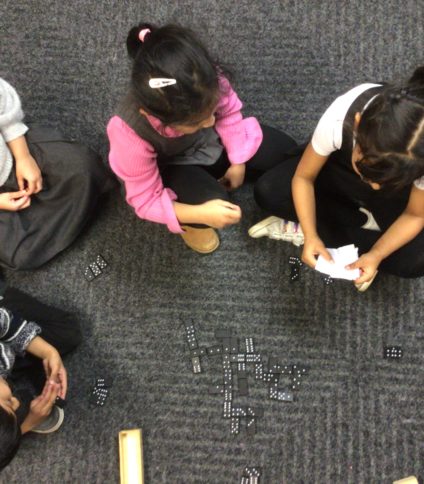

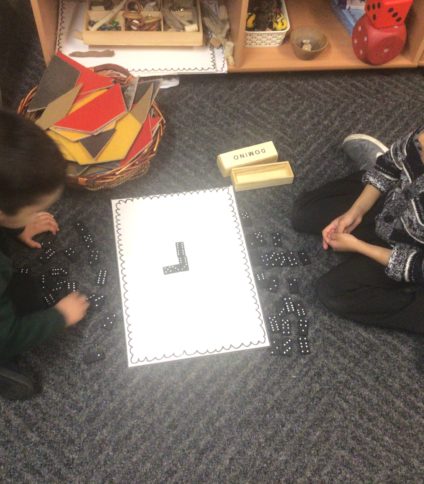

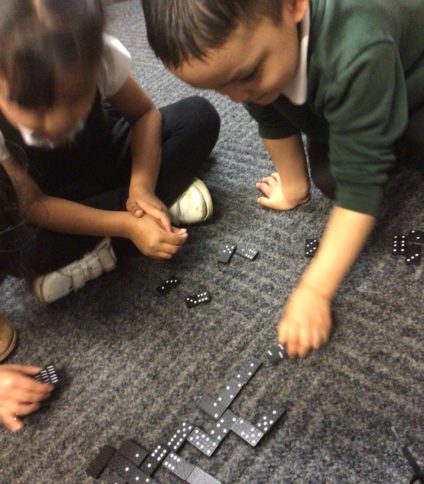

Subtraction
The children learned how to subtract. They know how to use a number line and a ten frame to work out a range of problems and then record it as a number sentence.
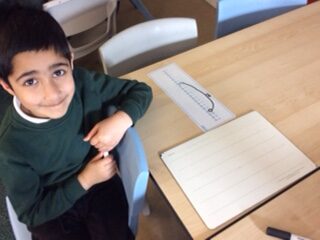

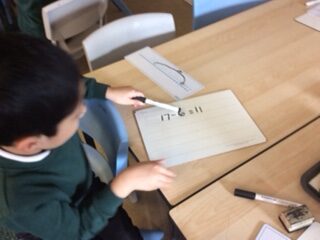

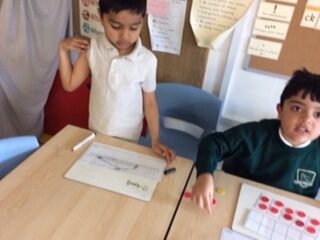

Problem Solving
Problem solving together the children are embedding their knowledge of number bonds to ten using a part whole model. Independent work following a whole class input.
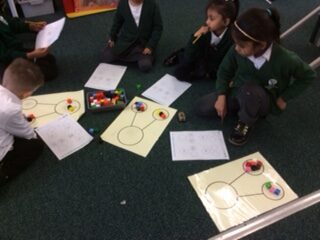

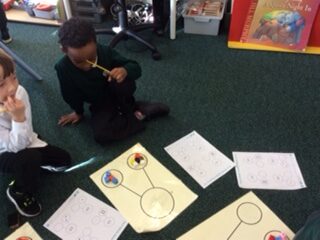

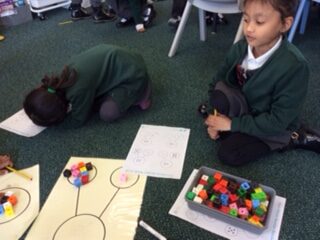

Objects
A group of children worked together to compare sets of objects. They ordered the sets from 1 to 10 and represented each set with numerals to show how many were in each set. They are using vocabulary to compare amounts in their collaborative work. Fab!
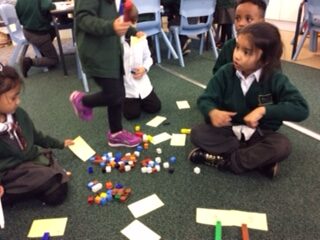

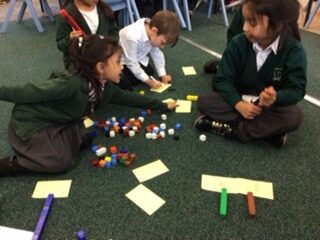

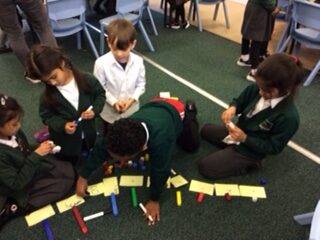

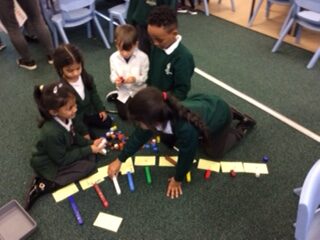

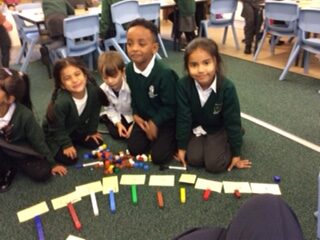

Multiplication in action.
The children have been playing a game where the score must be multiplied by 2. The children were to demonstrate how they calculated the total. They were highly motivated and keenly engaged, negotiating, turn taking and supporting each other in calculating the scores.
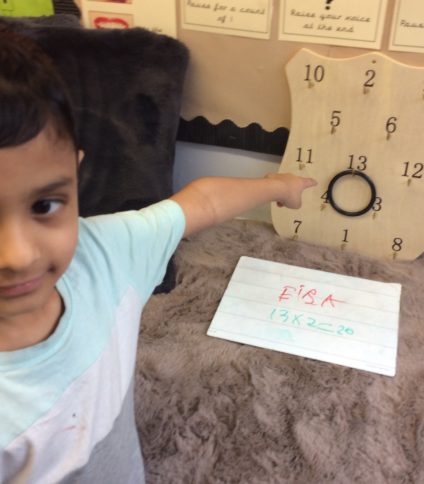

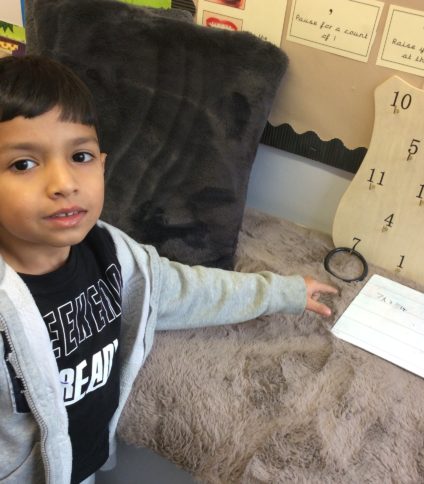

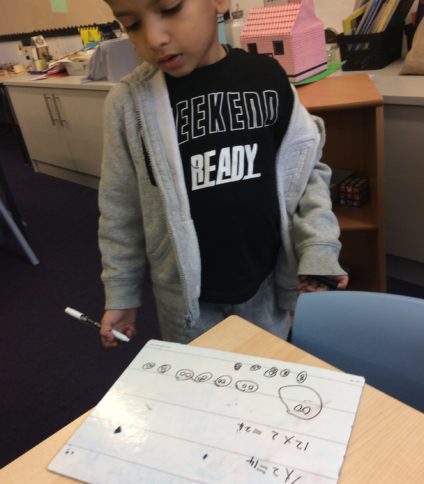

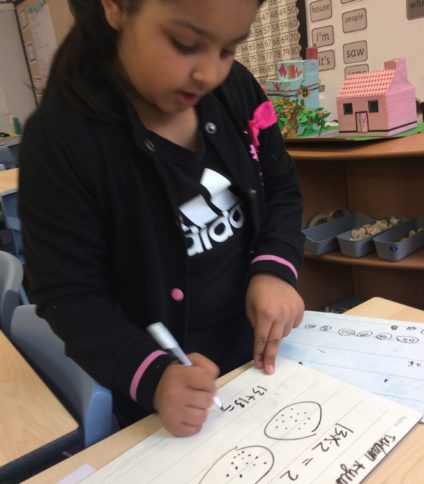

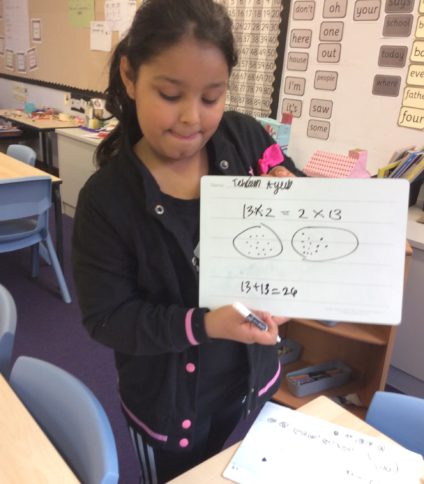

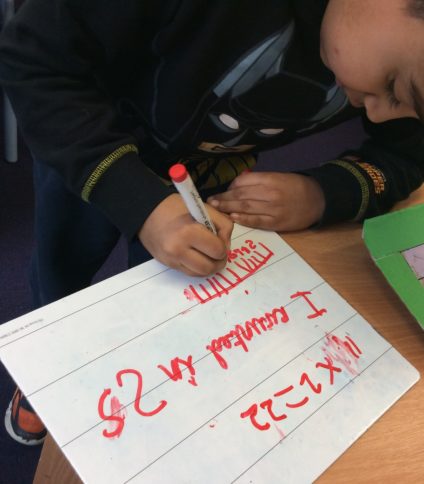

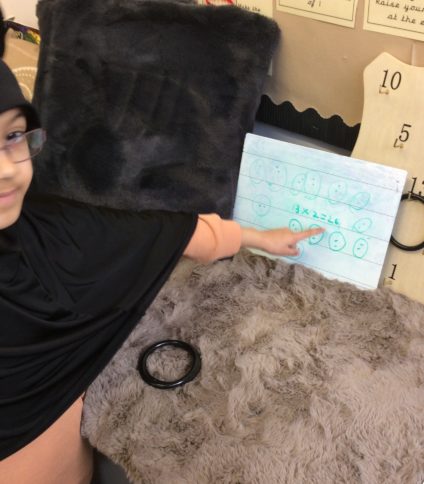

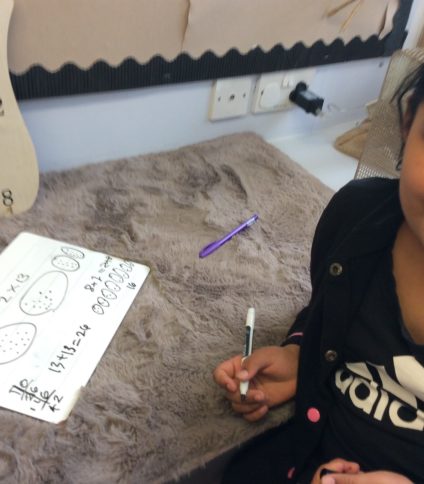

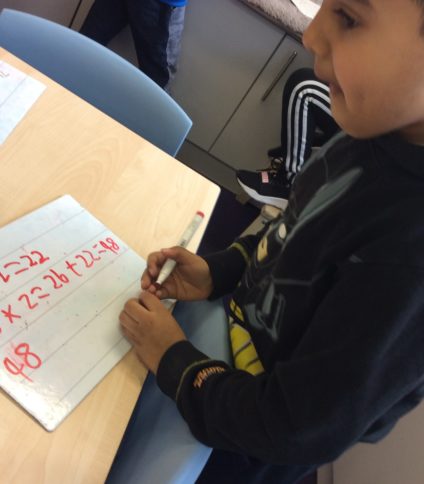

All children were hugely proud of their accomplishments as were the teachers!
Adding 3 digits
Children were engaged in a skittles game and tasked to find the total of 3 attempts, the winner determined by the highest score. Children were excited and keen to demonstrate their learning, articulating the process confidently. They engaged actively in organising themselves and reviewing the rules for fairness.
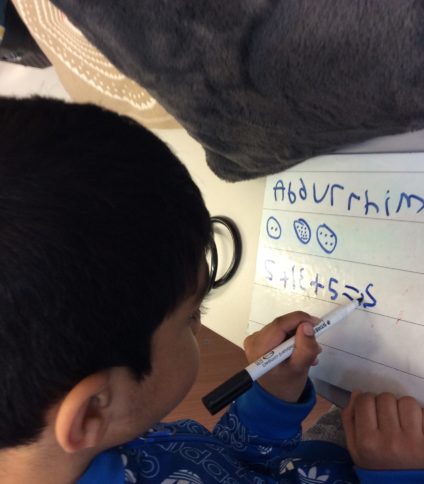

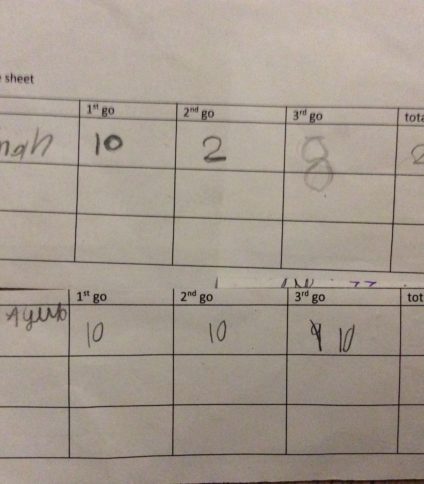

Mathematical Problems
We are using representations to solve mathematical problems. This helps us to explain how we solved the problem and demonstrates our thinking.
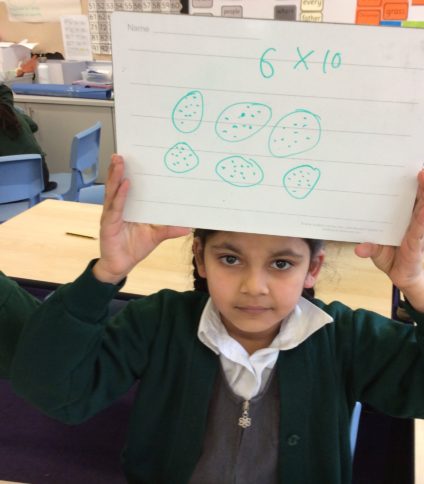

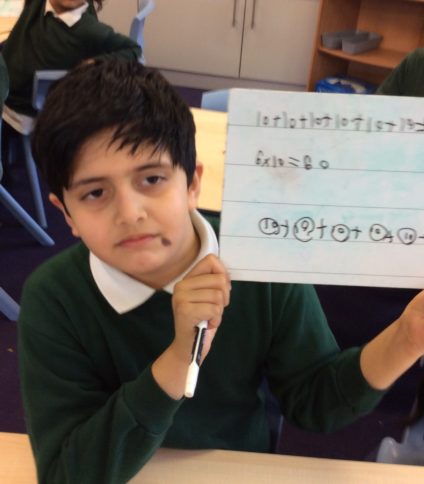

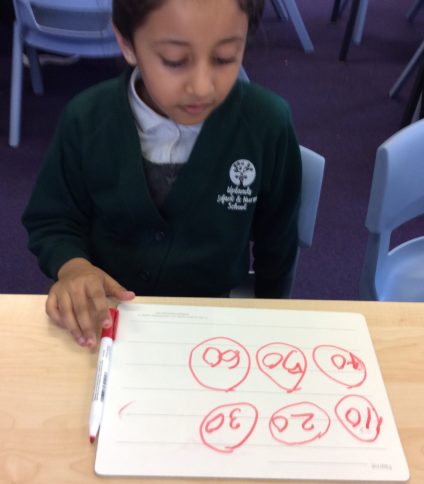

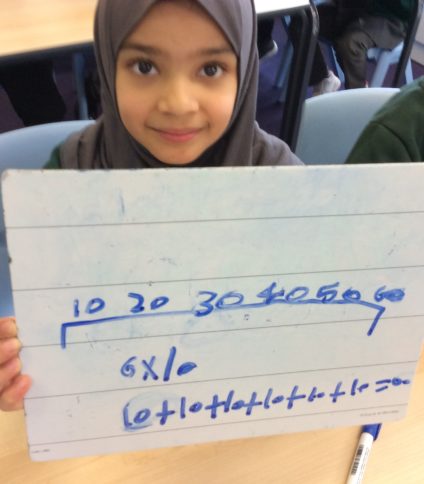

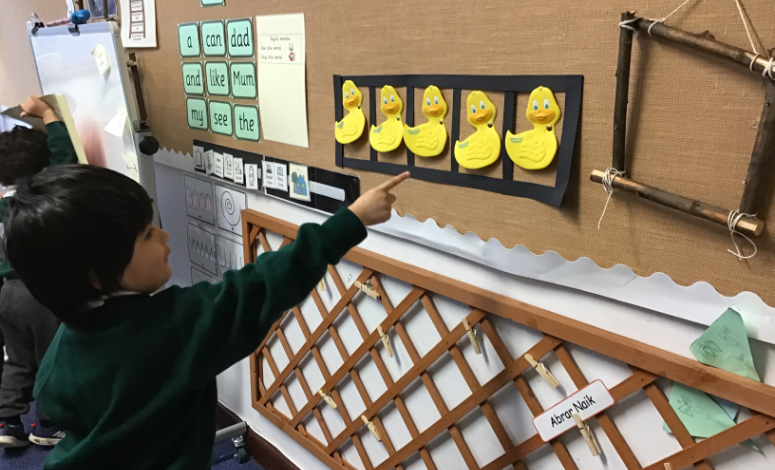
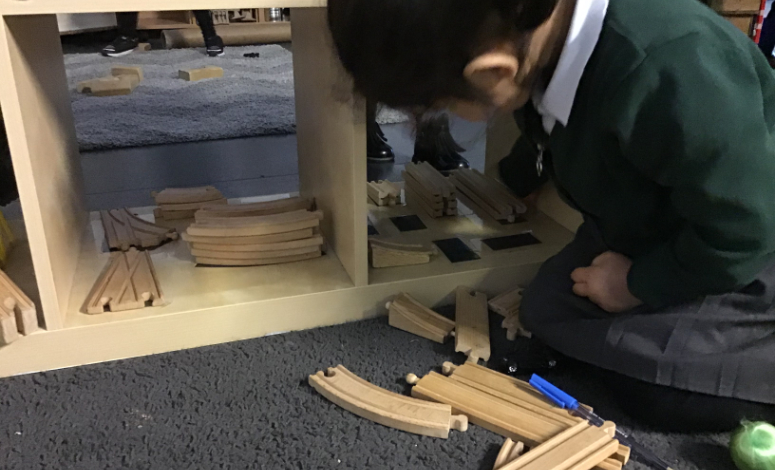
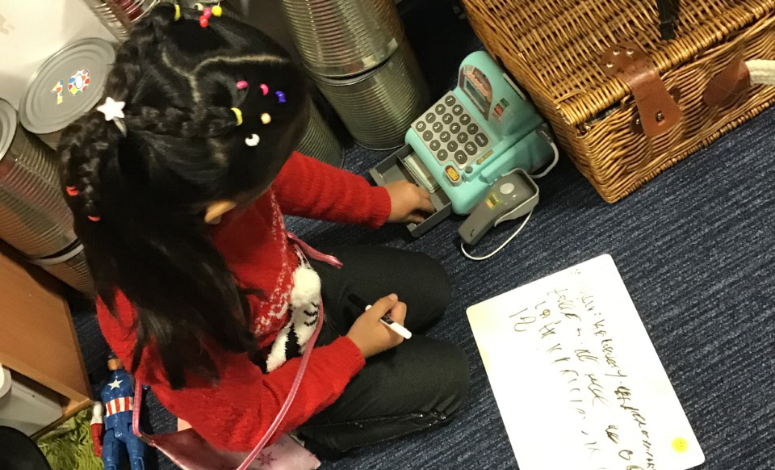
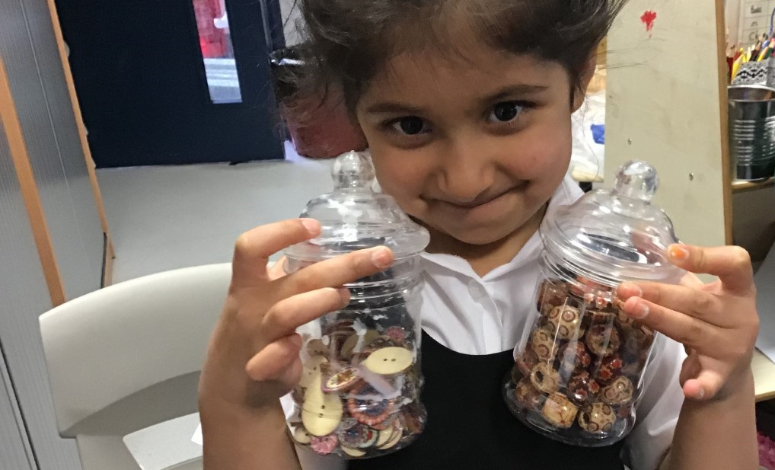
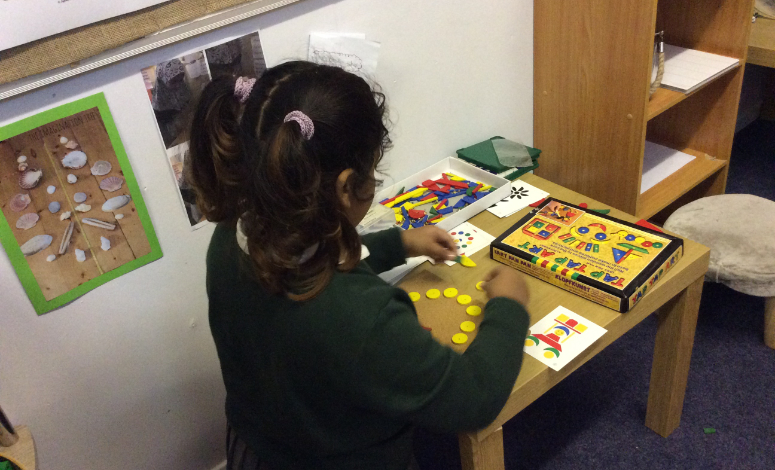
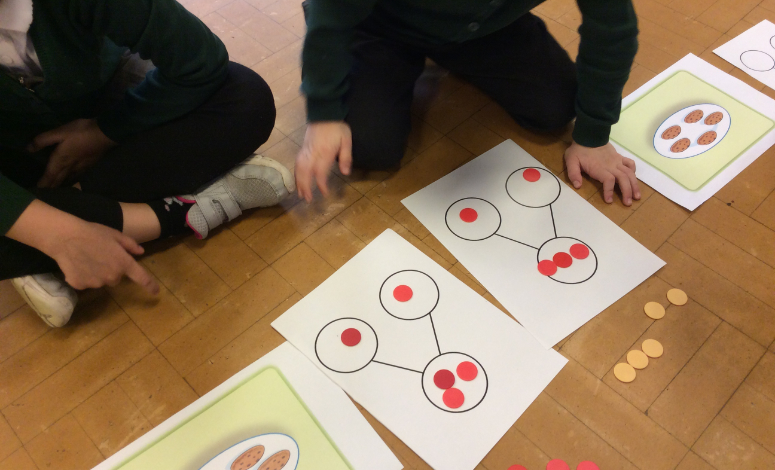
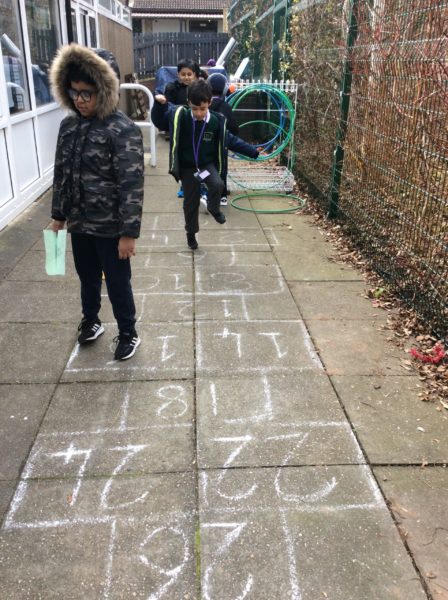
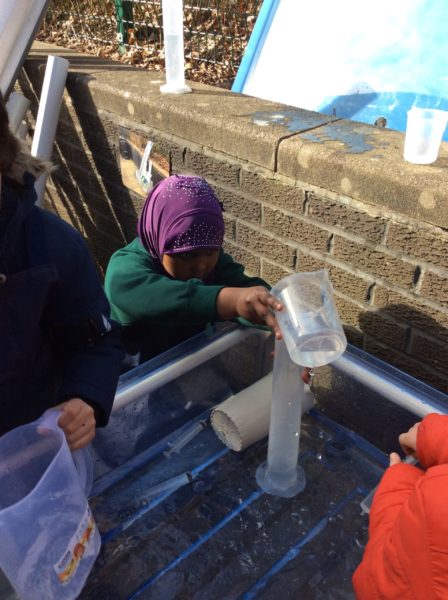
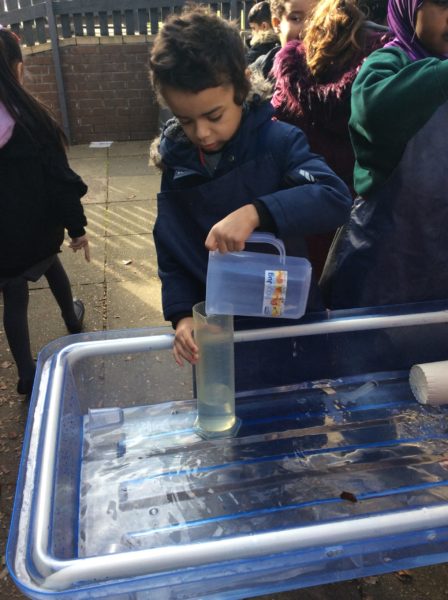
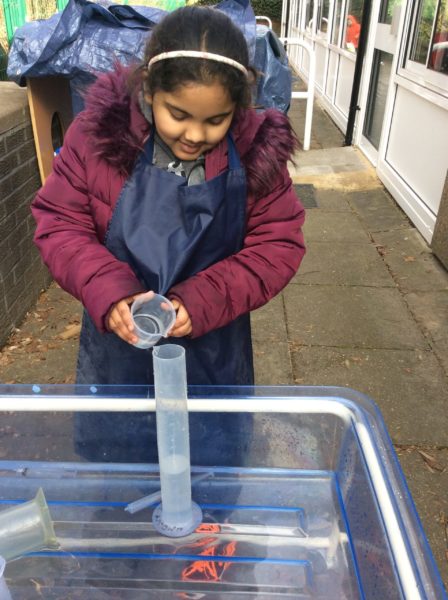
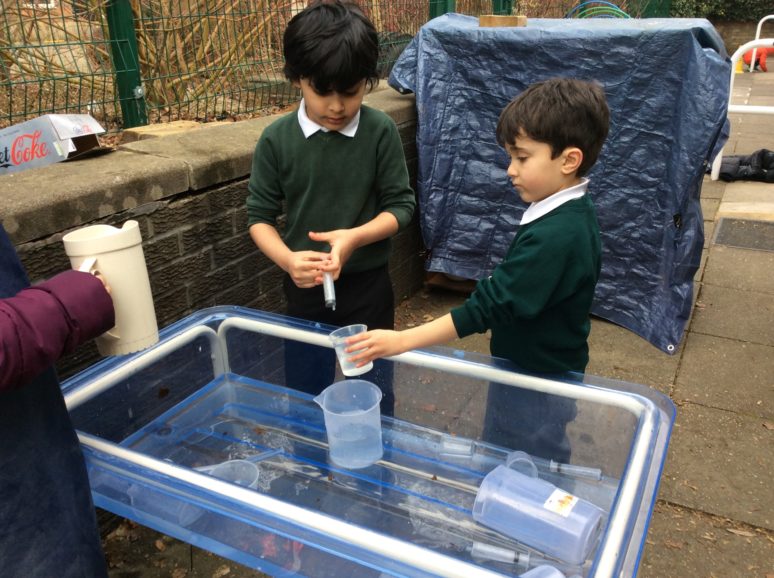
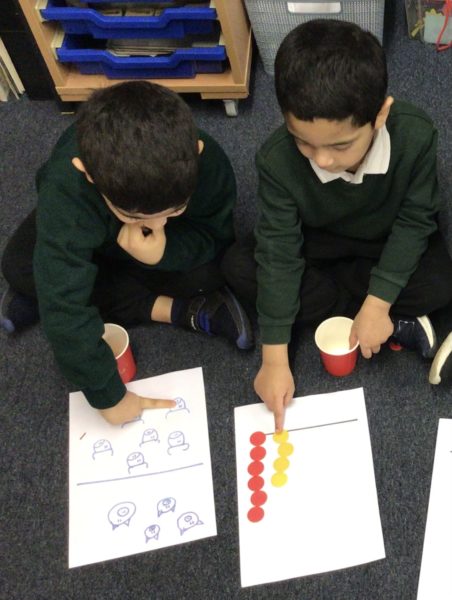
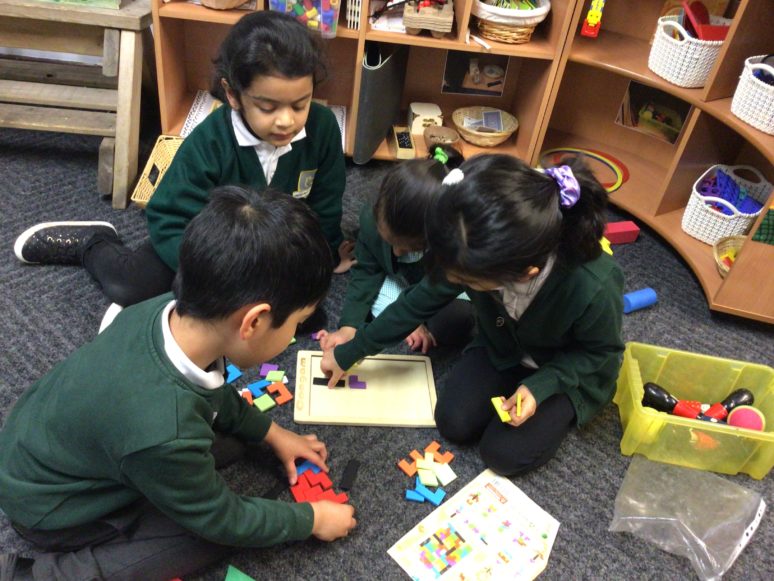
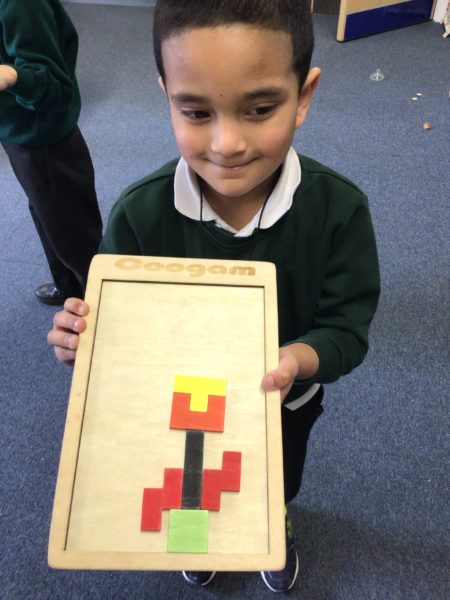
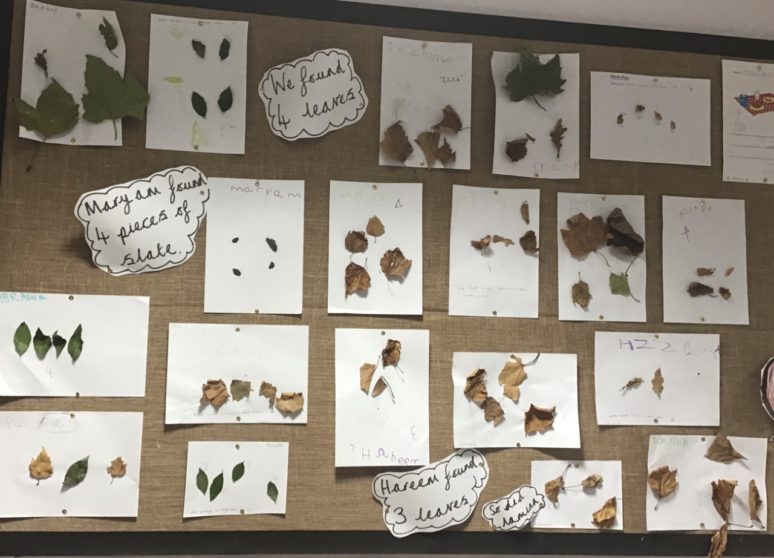
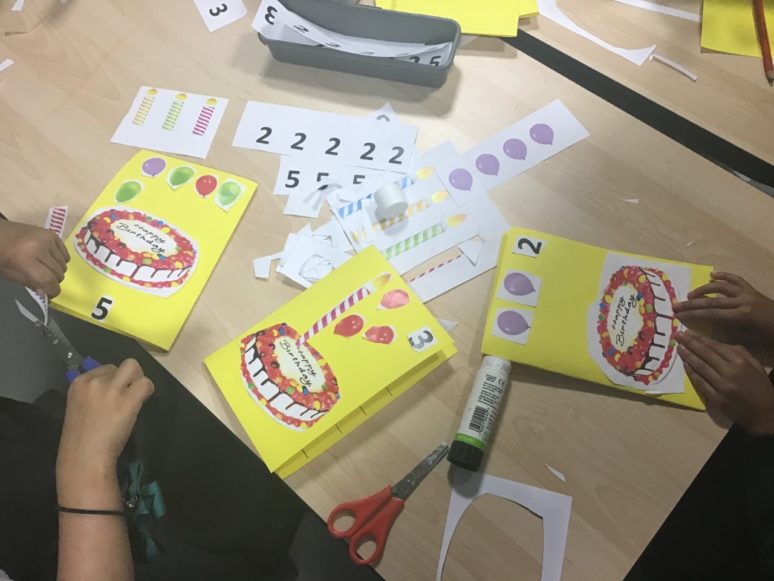
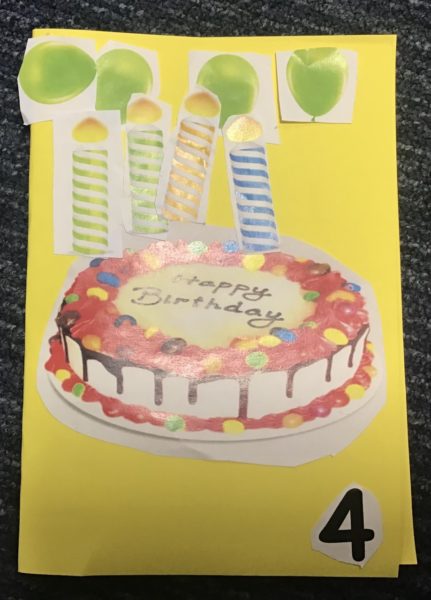
Maths games
Maths videos and games
Counting songs
Spinney Hill Park
Mere Rd, Leicester LE5 5BP
(or your local park and surrounding area)
- talk about seasonal changes
- look for patterns and shapes e.g. in play equipment, paths
- use prepositional language e.g. over, under
- spot number patterns e.g. door numbers
- count objects e.g. How many birds can you see?
Abbey Pumping Station Museum of Science and Technology
Corporation Rd, Leicester LE4 5PX
The National Space Centre
Exploration Dr, Leicester LE4 5NS
- 5 Little Penguins by Marcin Piwowarski and Sally Hopgood
- Quack and Count by Keith Baker
- 1, 2, 3 to the Zoo by Eric Carle
- The Very Hungry Caterpillar by Eric Carle
- One Mole Digging a Hole by Julia Donaldson
- One Gorilla by Anthony Browne
- Ten Little Pirates by Michael Brownlow
- Ten Little Princesses by Michael Brownlow
- Ten Apples up on Top by Dr Seuss
- Handa’s Hen by Eileen Browne
- One is a Snail, Ten is a Crab by April Sayre and Jeff Sayre
- How Many Legs? by Kes Gray
- Centipede’s 100 Shoes by Tony Ross
- One Hundred Hungry Ants by Elinor J. Pinczes
- 365 Penguins by Jean-Luc Fromental
- How Much is a Million? by David M Schwartz
Songs and rhymes:
- 3 Jelly Fish
- 5 Little Ducks
- Dobi Aya
- 12345
- 1,2 Buckle my Shoe
- 5 Little Monkeys Jumping on the Bed
- 5 Little Monkeys Swinging in the Trees
- 5 Little Speckled Frogs
- This Old Man
- 5 Currant Buns
- 5 Little Men in a Flying Saucer
- 10 in the Bed
- 10 Green Bottles
- 10 Fat Sausages

